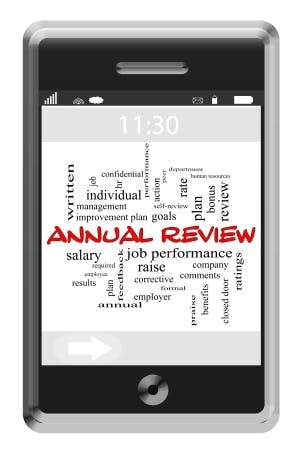It must be nearing annual performance review season, because my reader is filling up with news articles and blog posts on the topic – all of them reiterating just how broken the traditional process is.
Why is the traditional annual performance appraisal broken?
There’s several reasons, including too much emphasis on feedback from just one person (the manager) and far too infrequent giving of needed feedback (both praise and constructive refocusing).
Fixing a “broken” review system
The good news is these “breaks” can be fixed – add in the “wisdom of the crowd” through positive feedback from peers and colleagues and you overcome the single point of failure of manager-only feedback. Make this ongoing peer feedback specific, timely and, critically, frequent, and you help employees refocus and stay focused on your most critical priorities.
Additional failure points of a formal, infrequent appraisal process is criticism, when given in such a formalized atmosphere, is hard to take – even for the best performers. This article by Jena McGregor in the Washington Post shares research conducted by U.S. universities on how people respond to negative feedback in performance reviews:
While the findings might seem obvious (who likes to be reminded of their weaknesses?), they emphasize why so much of the effort and energy spent on the performance review process is often wasted. What’s meant to be a constructive and helpful discussion quickly gets lost once someone—even those who are sincerely interested in developing their talents and skills—hears critical feedback.”
The article goes on to say that it’s really all about perception (and why stack ranking is such a challenge). Receiving a 4 (out of 5) is actually demoralizing to good performers who care about the quality of their work.
But don’t be misled by the phrasing of the research. Employees do, indeed, want more feedback, just delivered in a more usable way.
How they did it at Adobe
Look at this case study on Adobe, shared in a LinkedIn excerpt from Scaling Up, the latest book from Stanford University professors Robert Sutton (also author of The No Asshole Rule) and Hayagreeva Rao.
In 2012, [Adobe] moved from yearly performance rankings to frequent ‘check-ins’ where managers provide employees targeted coaching and advice. There is no prescribed format or frequency for these conversations, and managers don’t complete any forms or use any technologies to guide or document what happens during such conversations. They are simply expected to have regular check-ins to convey what is expected of employees, give and get feedback, and help employees with their growth and development plans. The aim is to give people information when they need it rather than months after teachable moments have passed.”
Challenges with the traditional approach at Adobe (quoting):
- Annual reviews required 80,000 hours of time from 2000 managers each year, the equivalent of 40 full-time employees;
- After all that effort, internal surveys revealed that employees felt less inspired and motivated afterwards;
- Turnover increased.
The benefits of doing it Adobe’s way
Benefits of the new approach (quoting):
- A feeling of relief has spread throughout the company because the old annual review system was “a soul-less and soul crushing exercise.”
- The pulse survey indicates that most Adobe managers and employees find the new system to be less cumbersome and more effective than the old stack-ranking system.
- Some 78 percent of employees report that their manager is open to feedback from them, a sizeable improvement over past surveys.
- Involuntary departures have increased by 50 percent — this is because the new system requires executives and managers to have regular “tough discussions” with employees who are struggling with performance issues
- Voluntary attrition has dropped 30 percent since the “check-ins” were introduced; not only that, of those employees who opt to leave the company, a higher percentage of them are “non-regrettable” departures.
Positive recognition, done year-round
These frequent check-ins, however, don’t solve one of the most glaring challenges of the traditional review approach – feedback from one person. The wisdom of the crowd still needs to be drawn in – easily, effectively and also in an ongoing manner.
Give all employees the ability to positively recognize their colleagues throughout the year and then use that detailed information as additional, important data-points in these frequent check-ins. Perhaps you’ll learn where your employee has deep passion based on the recognition received from others and projects can be tailored to those skills.
How would you change and improve the traditional annual performance review if you could?
You can find more from Derek Irvine on his Recognize This! blog.
